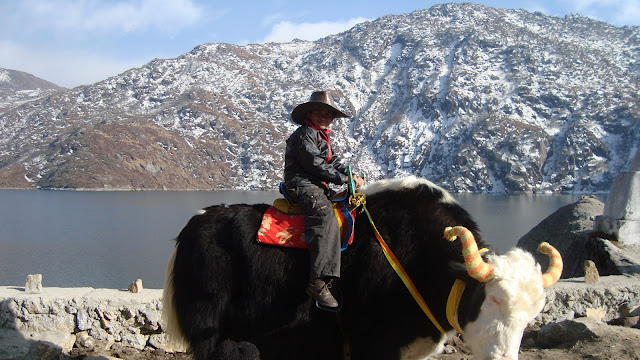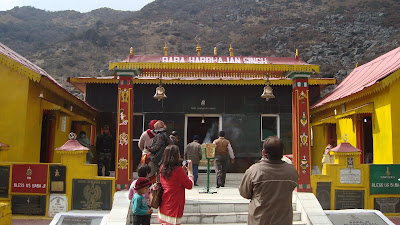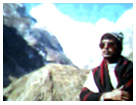Sikkim | Sikkim tourist places | North Sikkim | East Sikkim

Sikkim, a charming state in northeastern India that is tucked away in the Himalayas, is a paradise for outdoor enthusiasts. East Sikkim and North Sikkim has a wide range of tourist attractions that captivate visitors with its breathtaking scenery, diverse biodiversity, and vibrant culture. Let's look at some of this magical land's must-see landmarks and attractions.
Gangtok: the capital of Sikkim, is a thriving metropolis that successfully integrates modernism with the grandeur of nature. Take a stroll down the MG Road, the bustling centre boardwalk of the city, which is surrounded by stores, cafes, and eateries. Visit the Namgyal Institute of Tibetology, a renowned study facility showing Tibetan artefacts, and the tranquil Buddhist monastery Enchey Monastery. Don't miss the Tashi Viewpoint's breath-taking view of the Kanchenjunga mountain.




Tsomgo Lake: Tsomgo Lake is also known as Changu Lake, is a gleaming glacial lake surrounded by snow-capped mountains. The stunning blue seas and distant snow-white hills make for a lovely scene. Yak rides and lake boats are available for tourists to enjoy while taking in the serene surroundings.


Nathula Pass: Is a must-visit for anyone looking for adventure and a sight of India's border with China. This famous mountain pass, which connects Sikkim and Tibet, is located at a height of 14,450 feet. Nathula Pass requires a special permit, but the stunning vistas of the snow-capped peaks and the chance to see the border trade between India and China make it a memorable excursion.
Baba Mandir: Baba Mandir, a respected pilgrimage destination with a deep spiritual resonance and historical significance, can be found inside among the magnificent Sikkim scenery. This holy site is not only a place of devotion but also an example of velour and sacrifice. It is situated at an elevation of roughly 13,000 feet. Major "Baba" Harbhajan Singh, an outstanding Indian army soldier, is honoured at Baba Mandir, a temple. He earned a great deal of respect and reverence for his unwavering commitment to duty and his unselfish dedication to serving the country. For pilgrims who come to offer their prayers and seek the blessings of this heroic person, the temple serves as a sanctuary.




Major Baba Harbhajan Singh's tale is full of mystery. Even after his death in 1968, it is thought that he is still working for the Indian Army. He is reported to guide and guard soldiers as they patrol the harsh terrain of the area. Visitors frequently leave behind gifts, such as clothing, letters, and other goods, in the hope that Major Baba will receive them and grant them good fortune.
Major Baba Harbhajan Singh's memory and Baba Mandir are both carefully preserved by the Indian Army. The temple's grounds are tidy and maintained, and the statue of Major Baba is decorated with military gear and other gifts left by visitors.
At Baba Mandir, a large ceremony is held on September 11th each year to mark the passing anniversary of Major Baba Harbhajan Singh. Many pilgrims and tourists come to this event to pay their respects and take part in the festivities. There is a sense of celebration mixed with solemnity in the air.
Triangular Journey: Many tourists include a stop at Baba Mandir in their itinerary that includes Tsomgo Lake (Changu Lake) and Nathu La Pass. This results in a triangle journey that symbolises the lake's tranquil beauty, the high-altitude thrill of the Nathu La Pass, and the depth of Baba Mandir's spirituality. This excursion, which resembles a pilgrimage, captures the variety and distinctiveness of Sikkim's attractions.
Yumthang Valley: Also called the "Valley of Flowers," is a haven for those who love the outdoors. This picturesque valley, which located in North Sikkim, is covered with vibrant alpine flowers, rushing rivers, and snow-capped hills. Rhododendrons blossom in vivid hues throughout the spring, bringing life to the valley. Yumthang Hot Springs, which are renowned for its therapeutic benefits, offer a restorative experience in a peaceful setting.
Pelling: Located in West Sikkim, Pelling offers breathtaking views of the Himalayas, including the majestic Kanchenjunga. Visit the Pemayangtse Monastery, one of the oldest and most significant monasteries in Sikkim, housing ancient Buddhist artifacts. Take a short hike to the serene Khecheopalri Lake, considered sacred by both Buddhists and Hindus. The Rabdentse Ruins, the ancient capital of Sikkim, offer a glimpse into the region's rich history.
Ravangla: At 7,000 feet above sea level, the tranquil town of Ravangla provides sweeping views of the mountains and valleys that surround it. Visit the Buddha Park, which features a colossal statue of Buddha and offers a serene environment for introspection and meditation. The pilgrimage site of Tathagata Tsal offers breath-taking views of the statue and the lovely surroundings.
Zuluk: A little village in East Sikkim called Zuluk is a hidden gem for travellers looking for unusual places to visit. It is located at a height of around 10,000 feet and provides stunning views of the snow-covered Alps. The zigzag roads of the historic Silk Route, ancient monasteries, and the tranquility of the Himalayas make Zuluk a unique and memorable experience.
Gurudongmar Lake: Located at an altitude of 17,800 feet, Gurudongmar Lake is one of the highest lakes in the world and a sacred site for both Buddhists and Hindus. Guru Padmasambhava, the creator of Tibetan Buddhism, is remembered by the lake's name as he is thought to have stopped there on his way to Tibet. Local legend has it that the lake was completely frozen for the whole year when Guru Padmasambhava blessed it, causing a section of it to melt and supply water to the neighbourhood.
The clean surroundings and spectacular beauty of Gurudongmar Lake are well known. The lake's emerald waters contrast with the snow-capped hills in a bizarre and mesmerising way. The lake's attractiveness is increased by the sight of the spectacular Mount Khangchendzonga and the other towering peaks of the Khangchendzonga range.
Rumtek Monastery: a prominent Buddhist monastery in Sikkim, India, close to the capital city of Gangtok, also known as the Dharma Chakra Centre. It serves as the residence of the Karmapa, the leader of the Karma Kagyu lineage, and is one of the most significant monasteries of the Kagyu school of Tibetan Buddhism outside of Tibet. Rumtek Monastery hosts a number of religious festivals, rites, and ceremonies throughout the year, drawing pilgrims and visitors from all over the world. The most important celebration is Losar, also known as the Tibetan New Year, which is marked by vibrant ceremonies, mask dances, and spiritual performances.
Explore the numerous prayer rooms, meditation spaces, and monk lodgings of Rumtek Monastery. The monastery also houses a library where historical Buddhist writings and texts are kept. Visitors can also converse with the local monks to learn more about their way of life, spiritual practises. The monastery is renowned for its stunning architecture, intricate murals, and a golden stupa that houses sacred relics.
Aside from its significance for religion, Rumtek Monastery provides spectacular views of the surrounding hills and the cityscape of Gangtok. It's the perfect location for spiritual retreats, meditation, and contemplation because of the calm surroundings.
These are just a few of the main tourist spots in Sikkim that showcase the state's natural beauty, cultural heritage, and spiritual significance. Each destination offers a unique experience, allowing visitors to immerse themselves in the charm.








































.jpg)






Post a Comment